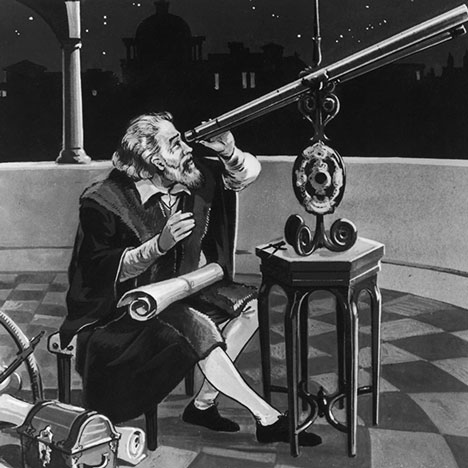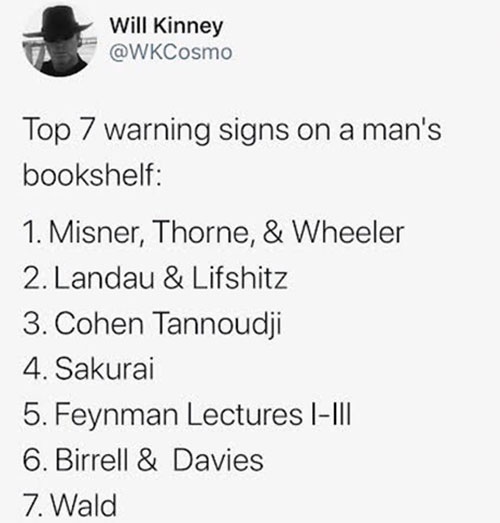Greetings from Palmia Observatory
Well last week we reported on our experience with the Galileoscope and now have some further observations about that and other news events.
Remember we were forced to look at Jupiter, which was very high in the sky, by kneeling and still trying to position the scope and hold and operate the iPhone through the eyepiece photography. If I had been one of the judges that Galileo had hoped to persuade, I would have grown tired and not looked at all. Anyway, we received a note from Gravity Guy & Part-time Las Vegan, Ken, who pointed out that Galileo is often depicted as sitting and using a tripod with his telescope. Yes, that's right. Check out this iconic image of Galileo at the scope. Thanks for that Ken! |
| Galileo, seated at tripod with telescope (Source: The Getty Museum) |
Yes, I found that using the Galileoscope was certainly made easier with the tripod and accompanying chair. The problem with observing Jupiter is it is still very high in the sky, during the hours that I choose to be awake, so it was still hard to spend much time on it, but the Moon was located at a more favorable elevation. You just don't know how much you appreciate the star diagonal and other features we use in our modern telescopes, until you are trying to look through a telescope at objects high in the sky with a STEM tool like the Galileoscope.
So, I enjoyed looking at the Moon and could see a lot of detail. I tried to take another iPhone image through the eyepiece and still found that difficult to accomplish without a clamp to hold the camera in place. But you can still make out the crescent moon and some of the details along the terminator. I had much better luck at our Mount Wilson excursion with the 60-inch scope with the iPhone capturing the eyepiece view. The details of that adventure are reported in the post of July 10, 2018.
 |
| Partial Moon and terminator using iPhone at Galileoscope eyepiece (Source: Palmia Observatory) |
Well having been tired out by staring through an eyepiece, rather than at a camera screen, we have some followup information regarding the need for large cranes at SpaceX Boca Chica facility. Recall that the post of August 20, 2020, discussed how Elon needed big cranes to lift and position the Starship and eventual combination with the Super Heavy booster. Well, in this Tweet from Felix Schlang, we see an artist's conception of how an integrated launch pad and crane together might achieve the intense rate of expected launches of Starships. Here we see the crane as the big tower next to the launch pad and the boosters and Starships can be transported there or they can even land directly there and then be hoisted into position. In this scene, we see the Super Heavy already on the launch pad and the Starship ready to be hoisted into place atop the Super Heavy. Hmm, this could be pretty neat if it gets built. As far as I know all that has been seen under construction so far is the launch pad for the Super Heavy.
 |
| Artist's impression of integrated crane and launch pad (Source: What about it?, @FelixSchlang) |
Separately, we have been waiting for some earthquake event to test out our Raspberry Shake seismometer. In other posts in the Twittersphere, we finally got news there was a small 2.5 magnitude earthquake centered in nearby Huntington Beach. Finally we have an event and can look for the indicated time, 11:19 pm, to see if we were able to detect it here at the observatory.
 |
| Hey, did this 2.5 earthquake might excite RA478? (Source: LA Times) |
Ok, so let's download the data from our seismometer, RA478, and see what we find. The local time, 11:19 pm is 6:19 UTC, so in the helicorder output strip we placed a green oval around that suspected time. Hmm, don't really see anything there. My nearby clumsy feet have introduced more response than the 2.5 magnitude earthquake. Hmm, maybe we need to wait for the "big one." No, we know it is coming but that is not the data point we want!
 |
| No earthquake signal in the green oval (Source: Palmia Observatory) |
So, we missed out on recording an earthquake for now, but we can still see what events are happening in the Twittersphere. This post by Will Kinney, @WKCosmo posed an interesting question about the books that might be found on a man's bookshelf. We give Will the benefit of the doubt here and understand his "man's" in a general human sense and the question can apply to anyone's bookshelf.
So, if you want to conduct a test and see if you are a physicist wannabe or not, check out the authors and see what is on your bookshelf. Sadly, perhaps, I am guilty of having all seven books. Not that I have read through them or understood them, but I do have them. My only excuse is that I mostly find that I get up to something like page 20 in each of them and then get lost and have to find an easier book to explain what I missed.
 |
| Are you guilty of having these author's books in your bookcase? (Source: @WKCosmo) |
One of the books that I have had to turn to in order to understand some other book on quantum mechanics is this book, "Quantum Superposition: Counterintuitive Consequences of Coherence, Entanglement and Interference", by Mark Silverman.
 | |
|
If you have done any study of quantum mechanics at all you know that the concept of the quantum state being a superposition of other possible quantum states is a key point. So if one quantum state is a solution to Schrodinger's equation then any linear combination of states will also be a valid solution. But one of the key things I learned in just skimming through Silverman's book is that this superposition is more than just a mathematical tool but that its effects can be seen in cases where we normally think that particles in a box, for instance, are just in one energy state or the other, but that we should still think of them as being in a superposition of possible states. He showed some measurements where we find that you have to consider the particles in the box as in a superposition or else you don't get the right answer.
This figure, abstracted from the text, shows the state of a box of particles decays back to the ground energy state after having been excited by a pulse of laser light. Silverman explains that if you assume that the particles are just in one state or another, and not in a superposition, then the measured results would have just been the decaying exponential function shown there. But if you do the calculation, as if the particles in the laboratory box are really in a superposition of states, mostly made of ground states, then you would measure a series of decaying "quantum beats." Well, the decaying series of quantum beats is exactly what is seen when the measurement is made. Hey, yes, it makes more sense to say that particles or atoms should be viewed as being in a superposition state, rather than just saying they are all in the ground state before the experiment is run. Pretty neat!
 |
| Demonstration of quantum beats and superposition (Source: Silverman, "Quantum Superposition") |
This is the text from Silverman's book that went on to further describe the measured results shown in the previous figure.
 |
| Demonstration of quantum superposition principle (Source: Silverman, "Quantum Superposition") |
Finally, after getting tired out by being in a superposition state, a chance observation of local news, this time on KTLA5, generated sort of a daydream. Here we see weekender, Dayna Devon, present the latest entertainment news. Of course, here what is meant by entertainment is mostly a review of Hollywood celebrities behaving sort of like Hollywood celebrities. In my sort of dozing off state, I imagined instead that Dayna introduced a new entertainment segment, "for Physicist Wannabe." Ok, ok, it was just a daydream, and she just continued talking more about Bon Jovi and the rest of them. So, with apologies to Dayna, here is my imagined segment!
 |
| My imagined physics entertainment segment didn't come to pass (Source: KTLA5, with apologies) |
Until next time, here from our burrow, stay safe, as we recover more of our freedom,

No comments:
Post a Comment